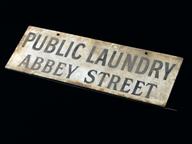

"Surekill" fly killing insecticide card, impregnated with DDT, dated to last until December 1947, made and sold for domestic use, London, United Kingdom, 1947
Initially hailed as a wonder chemical and heralded as a significant development against pests and disease, DDT (Dichlorodiphenyltrichloroethane) was used by consumers upon its introduction to the domestic market after 1945. The item is promoted as “modern, clean and hygienic” and "DeaDly To flies", playing on the DDT name. The advertising suggesd that non DDT environments were archaic, dirty and unhygienic. This demonstrates that DDT’s introduction to the domestic market occurred alongside, and fed into, evolving ideas of what a modern, safe and fresh home environment should look and feel like. According to the donor, after they moved to a new -build, modern, council flat, the need for using such DDT cards disappeared as their new home was inherently pest free, cleaner and safer.
After the Second World War, it was used as part of a World Health Organisation programme to attempt the eradication of malaria, but many countries have since banned its use. Worldwide, it is no longer used in agriculture since 2001. It was banned for use in agriculture worldwide in 2001. The primary driver for the banning of DDT was due to its perceived damaging effect upon the environment and other, unintended species, such as mammals and birds. Rachel Carson’s seminal work Silent Spring first highlighted the broader environment impact of DDT’s use and led to its eventual banning within the United States.
Details
- Category:
- Public Health & Hygiene
- Object Number:
- 2017-100
- Measurements:
-
overall: 255 mm x 80 mm x 2 mm, .1 kg
- type:
- insect trap and insecticide
- copyright:
- Unknown Copyright holder
- credit:
- Mrs E D Page




